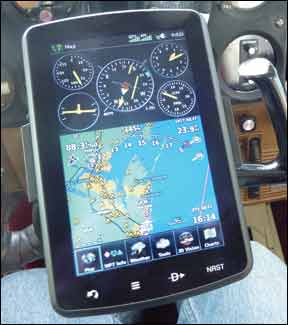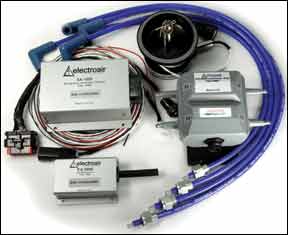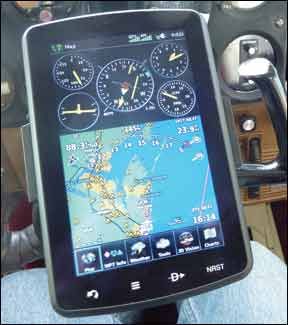The Data Dilemma
I read your synopsis on our data in the cockpit; how discouraging. (See Aviation Consumer, December 2011.) May I ask a question and make a comment? First, I think I vaguely remember reading some time ago that a portion of the aviation fuel tax had been set aside and saved up to fund the NextGen system, and that these funds were diverted to other uses not even within aviation. Am I correct or mistaken on this, or did something similar to this happen?

I don’t so much mind paying for what I use, but the current taxing and accounting practices in place don’t seem to allow for this. If what I presented above is true, I’m mad as hell.
In comment, I was ready to put in a G500 glass panel in my homebuilt, but after reading this article, I’m seriously considering going back to putting in steam gauges. And please make note, I plan to fly more not less.
If or when the government oversight or involvement in my flying becomes too onerous (it is getting very close), I will continue flying, but without paying attention to their rules. My airplane relies on physics to fly, not the permission or oversight of any government.
Larry E. James
Via e-mail
We’re not sure about the original funding intent for NextGen, but we are sure that at some point, the FAA decided it prudent to foist the cost off on users.
421 Fine Points.
I enjoyed your article on the Cessna 421. Having flown and managed one for nine years, I have some experience in the 421B. At the time, I was also flying a Beech E-90 for another firm. Initial investment aside, the Beech is 15 to 20 percent more expensive to operate on an hourly basis.
My two employers never met or even spoke on the phone, but they would borrow each other’s aircraft if one was down for maintenance. The swap was nm vs sm and each paid for his own fuel. No complicated contracts or bookkeeping, just a simple understanding between gentlemen.
As for the 421, when I took over the operation, one engine had 200 hours and the other had 300 hours. My most frequent destinations were small towns in Colorado all above 6000 feet MSL. We never changed a cylinder starter or turbocharger. It is all in the operation.
The best cruising altitude for a Golden Eagle is 1000 feet above the turbulence. Why waste time climbing unless the additional altitude is going to put you in a very good tailwind? Do not work the engines hard needlessly.
Cool the engines slowly. Plan your descent so that you reduce power one inch every two minutes. If ATC asks for a slam dunk, just say “unable.” Most will understand.
If you have a quick turn, point the aircraft into the wind and open the oil filler doors to let the heat out. Even better, open the outside cowl doors. It does not take more than three minutes. Don’t forget to close them.
Respect your starters. If the engine does not start after 15 seconds, it is not going to start. Let it cool for three to five minutes before trying again. After several attempts, let it cool for 30 minutes. I can think of few things worse than a scorched starter on a Sunday afternoon.
All in all, if you have five passengers and their baggage and 90 percent of your trips are 400 miles or less, the 421 is an excellent, reliable aircraft. We took those engines 200 and 300 hours past recommended TBO and they were still in very good condition.
Juan L. Brito
El Paso, Texas
Kudos to Us…
Not long ago, I took you to task a bit on the lack of coverage of “backside charges” for using GPS-based cockpit boxes. You even published my letter in the December issue.
So thanks is deserved for the second half of the features/costs matrix in that same issue when discussing the 795/6 vs. iPad apps. Also, those same subscription categories could be useful when reviewing the next latest and greatest box, portable or otherwise.
Good job…and thank you.
Jack Tyler
Jacksonville, Florida
…On the Other Hand
I have always respected what you do for us at Aviation Consumer and all it does for GA. But I was surprised after purchasing the Garmin 796, based in part on your video, of all the shortcomings you failed to mention.

Garmin clearly missed the boat on making this unit portable with the huge clunky cable that can’t be unplugged. What was the point of having a battery if you can’t mount the unit without the bracket and an enormous six-foot-long cable?
All of the mounting hardware is huge, bulky and hard to live with in a cockpit. The screen still is not big enough to view an entire approach plate, yet the unit footprint is similar in size.
The last issue is the unit does not tell you when the battery is completely charged and it takes a long time to charge a battery; this is very annoying. I will say that the resolution, functionality and ease of use are better than anything I have ever seen.
I hope you will mention some of the shortcomings of this new product so Garmin will make an attempt at fixing them. I am not particularly sorry I bought it, but I sure thought it would be a portable unit similar to the GPSmap 496, but with a larger screen. Garmin is almost there…
Chris Galloway
Via e-mail
Electroair Beef
Usually, I’m impressed by your publication’s knowledge and reviewing capability. However, you had one statement in your review of the Electroair electronic ignition that is incorrect. (See October 2011 Aviation Consumer.)
The last paragraph in the “Bolt It On” section states that it’s called a “wasted spark” system because it gains an efficiency advantage from advanced timing. While it is absolutely true that the electronic ignitions (such as Emagair, Electroair and Light Speed) gain efficiency due to variable timing, that has exactly zero to do with the definition of “lost spark” or “wasted spark.”
These terms come from the fact that the system fires two plugs at the same time, one on the compression stroke and one on the exhaust stroke. Since firing a plug into the exhaust stroke accomplishes exactly nothing, it’s called a “lost spark.” It does, however, make the system easier to design and manufacture, and costs little in the way of electricity.
Full disclosure: I have a Light Speed EI and a Pmag EI on my homebuilt COZY MKIV with an O-360A2A and an Airflow Performance fuel injection system.
Keep up the good work.
Marc J. Zeitlin
Via e-mail
Good point. The Electroair system allows for advance settings up to about 38 degrees BTDC, so it fires before the conventional magneto does…meaning that the mag doesn’t fire into the exhaust stroke, but it does fire into a fuel/air charge that’s already we’ll into combustion. It should therefore help with fuel economy.


